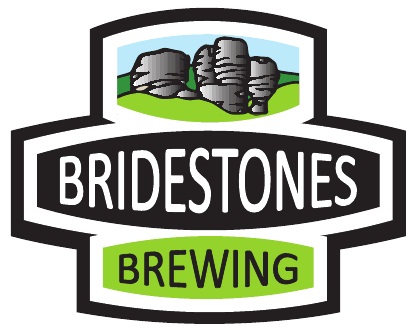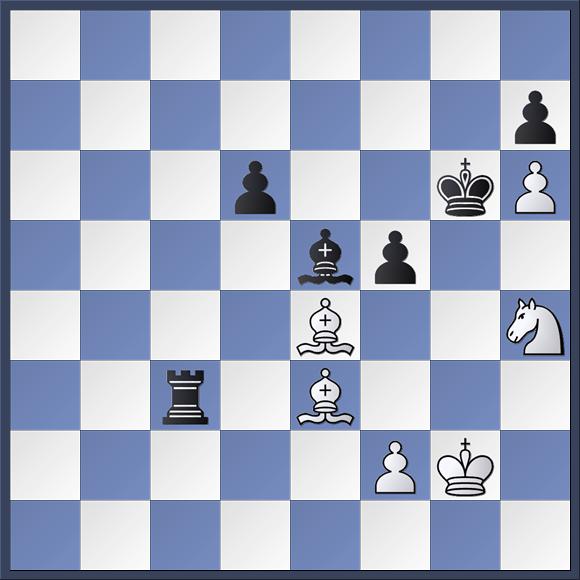 Bridestones Holme Brew Chess Challenge: Round 4 and 5
Bridestones Holme Brew Chess Challenge: Round 4 and 5
Over the last two weeks the Bridestones Holme Brew Chess Challenge has seen another four games completed and the competition leader has reached the half-way point in the competition. Wins against Nick Sykes and Dave Shapland mean that Matthew Parsons is comfortably in the lead and it already looks like he won’t be caught unless he has a total melt down in the second half of the tournament. That said, the current gap between Matthew and the chasing pack is artificially wide because no-one else has played five games yet. Pete Leonard and Nick Sykes have now played four and Andy Leatherbarrow, Dave Shapland and Alastair Wright have played just three.
Two round four games were played last week as Pete Leonard faced Andy Leatherbarrow and Matthew Parsons played Dave Shapland. Both of these two games were interesting encounters of a decent standard. Pete and Andy have never played each other at a classical time limit and Andy made a very clever choice of opening to give himself the best possible platform against Pete. Selecting the Nimzowitch Defence 1.e4 Nc6 2.d4 d5!? was and excellent way to catch Pete on the hop and it worked. Pete didn’t play the opening optimally and Andy got a very pleasant position. Of course both sides missed some improvements but ultimately Andy played the endgame very accurately and Pete didn’t defend himself as stubbornly as he could have done in allowing Andy to win in fine positional style. This result brought Andy up level with Dave Shapland who started the round with a point and a half.

This position appeared in Parsons vs. Shapland. Matthew has just played 40.Nh4+ and Dave now played Kh5. However, if he’d played Kf6 instead he could have saved himself. Can you work out how? The solution is in the game viewer at the end of this post
Facing Matthew with the Black pieces meant that Dave had to decide how to best meet Matthew’s pet system, the London. Dave chose 1.d4 d6 which is certainly a good way to meet White’s plan to play Bf4 but if it has a draw back it is that it encourages White to transpose into King’s Indian and Benoni positions after and early c4. Matthew sensibly did exactly that and Dave decided to go for a Benoni with a c5 break, rather than a King’s Indian with e5.
Dave may not have played the opening with the upmost precision in terms of move order but he did succeed in developing all his pieces and stabilising his position thereby forcing Matthew to devise and execute some kind of plan. After a longish think at move 15 Matthew decided to go for queen’s side play with Rab1 and then b4 the following move. Meanwhile, Dave didn’t really have the luxury of options as his opening play left him solid and developed but passively waiting for White to come at him. When the queen’s side advance came Dave tried to counter in the centre and then found some resources to complicate the position on the queen’s side as Matthew lost a bit of the control he had over the position and Dave’s pieces sprang to life.
The critical position of the game came at move 23 as Dave sank into long thought and then, not wanting to get into time trouble, opted for a line that appeared to simplify to an unbalanced and playable ending. The judgement was a poor one however because it transpired that keeping pieces on the board and maintaining tension would have been the route to an advantage for Black whilst the resultant ending reached in the game was simply better for White. Matthew had a bishop and knight for a rook and pawn but, critically, both sides also had their dark squared bishops and the presence of the White bishop pair throttled Black’s potential for counter play. Dave’s position might still have been defensible but it was a difficult challenge that was beyond Dave and he succumbed fairly tamely as Matthew simply created structural weaknesses to that Dave couldn’t defend. However the computer found a miraculous resource almost at the end of the game that could have saved him a half point. Take a look at the diagram position and see if you can work it out before checking out the game and solution in the viewer at the end of this post.
A round 5 game and a rescheduled round 3 game were also played as Matthew and Nick and Pete and Alastair faced off. Nick and Matthew played their round 5 game early and Nick, having gained a perfectly acceptable middle game position with White inexplicably muddled up a move order and ended up without his queen! Sadly this was the second game in a row where Nick had gifted his opponent the full point and it leaves him languishing on half a point from four games.
Pete and Alastair’s game was more closely contested, at least until the very end of the game and the evening. Intriguingly Alastair elected to play the French and face Pete’s King’s Indian Attack set up. The game became very complicated and both players got short of time and may have missed opportunities to improve their play. As the end game hove into view Alastair managed to grab himself a pawn that might have proved decisive were it not for the fact that he then blundered a piece to essentially hand the full point to his opponent. This win allowed Pete to move into clear second place with two points from four games although he has played a game more than Andy and Dave who are half a point behind him.
All four games mentioned in this post are annotated in the game viewer below. Next week Andy will play his postponed round 1 game against Dave and back markers Alastair and Nick will try to improve their positions in a battle that could leave one of them firmly adrift at the foot of the standings.
( )